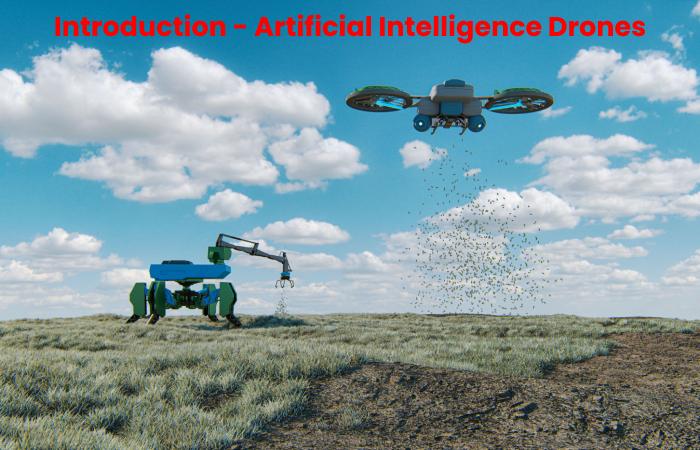Artificial Intelligence Drones: The examples of military drones and companion robots about artificial intelligence, ethics, and human values
Can AI have higher ethical standards than human intelligence? Can it uphold human principles more admirably than a person? This article investigates several ethical concerns brought up by AI. The practical strategy, particularly the one that uses agent-based theory, may offer a remedy. Combat drones, also known as vectors of death. And companion robots that can sustain human life were our two extreme scenarios.
The ethics of AI and unmanned aerial vehicles (UAV) must remain researched based on military ethics and human values in times of war. Even though they remain not designed to harm people or diminish their dignity, companion robots may risk their social, moral, and physical well-being and structural soundness. Companion robots must not replace nurses but rather aid them in providing better patient care. This is a crucial ethical need.
Table of Contents
Introduction – Artificial Intelligence Drones

Numerous studies indicate that investing in artificial intelligence technology (AIT) will help to sustain development (SD) globally because it is a critical factor in productivity and economic progress (Lega et al., 2013; Moskwa, 2016).
For instance, a recent report indicates that AIT is crucial to the long-term viability of the US economy and national security (science and technology report, February 2019) 1. As a result, AIT investment may significantly impact the prospects for sustainable development in many other countries.
This shows that AIT will remain popular in the upcoming years since it gives businesses and government organisations pursuing efficiency and sustainable development (SD) a competitive edge. As a result, the media, organisations, and academics are paying increasingly close attention to the AIT investment trend (Lega et al., 2013; PwC, 2018; Rakovska and Stratieva, 2018).
Healthcare delivery systems are one of the most common areas where AI stands used and where AI is changing the industry (PwC, 2018). Because of this, many studies have remained devoted to the debate on AIT and healthcare delivery; nonetheless.
The expanding literature in this field shows that researchers have primarily concentrated on managing healthcare databases, medical diagnoses, operations, and prescriptions. Therefore, it is not unexpected that AIT applications in human endeavours have significantly increased during the past 20 years.
Applications, History, Definition, and Progress of Artificial Intelligence
The definition of artificial intelligence (AI) is “a system’s ability to accurately read external input, to learn from such data. And to use those learnings to fulfil specific goals and tasks through flexible adaptation” (Kaplan and Haenlein, 2019, 17). AI is a term by Fazal et al. (2018, 246) to describe a machine that can solve issues and discover solutions to new ones.” AI is primarily the capacity of machines to do tasks.
By acting in a way that is clever and human-like.
The Theoretical Basis
Davis (1973) defines CSR as the firm’s consideration of and response to issues beyond the specific financial, technical. And legal requirements of the firm to accomplish social and environmental benefits in addition to the traditional economic gains and to fairly balance the needs and concerns of various stakeholders, the concept of CSR has received conflicting views from authors. CSR remains defined by Watts and Holme (1999) as a company’s commitment to sustainable economic growth.
Conclusion
AI-powered drones rely heavily on computer vision. This technology allows drones to identify things while flying and analyse and collect data on the ground. A neural network performs high-performance onboard image processing in computer vision.
Also read : What is Refocus Eye Health?
Related posts
Featured Posts
What is Coins Of Magic L2 Quest
If you haven’t finished the Coins of Magic L2 quest, here are some pointers to help you. The first tip…
About Winnie the Pooh SVG – In Details
Since 1966, Disney has released several animated productions featuring versions of Winnie the Pooh and related characters, beginning with the…


